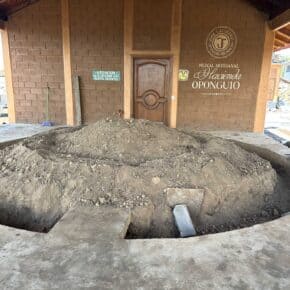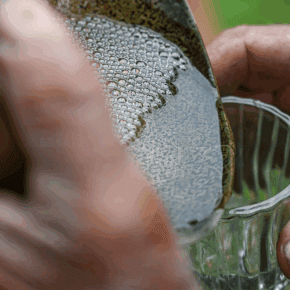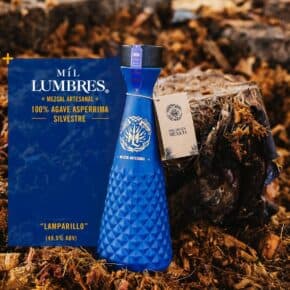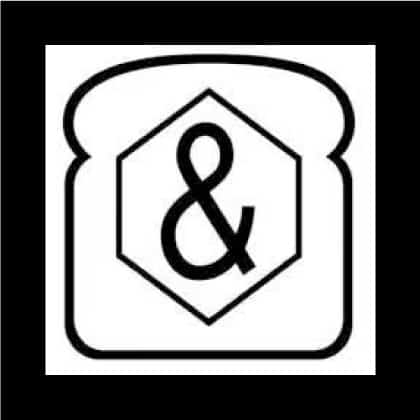Ever wondered why some mezcal tastes like acetone or burnt rubber? In this opinion piece, Read Spear explains why we shouldn’t give a pass to flawed agave spirits and then breaks down specific flaws in mezcal flavor profiles and what they indicate
Imagine getting up at five in the morning to tend your agaves before the sun becomes unbearable—and on harvest days, pushing through that heat anyway. When your agaves start to ripen, you might be sleeping in the field with a gun, on the lookout for thieves. You’re guarding a plant that took eight, ten, maybe fifteen years to get there.
When it’s time to distill, the still calls the shots. If the final cut comes at three in the morning, you climb out of your hammock and manage the fire. You’re hauling, cutting, stacking, fermenting, distilling—all by hand, all on your back, with the help of your animals, which you also tend.
That’s not romantic; it’s reality.
Why flawed mezcal flavor profiles shouldn’t get a pass
To describe mezcal production as an arduous process doesn’t begin to capture it. It is gritty, grinding, and grueling. Mezcal producers are committed in a way that few distillers of any other spirit need to be.
I think that’s why–of all spirits–so many mezcal drinkers are quick to excuse its flaws. I’ve sat at bars with experienced drinkers who offer sharp, eloquent takes on whiskey, wine, gin… but the moment the vaso veladora arrives, it’s as if the server has cleared away their critical faculties along with the empties. I don’t think the hard conditions of production justify grading mezcal on a curve. That’s not how expertise is honed. And have no doubt: the maestro mezcaleros are experts—and the people I know all want the unvarnished truth.
When a maestro wakes at 3 AM to manage a fire or sleeps in the field with a rifle, that’s evidence of their commitment–not a reason to make excuses when the time comes to judge their product. It’s their livelihood and that is a gravely serious thing. When someone that committed makes a mistake, the respectful response is honesty. Naming the flaw is how you honor their expertise.
I suspect many drinkers hesitate to criticize traditional spirits because they don’t trust their place in the conversation. They assume there’s something they’re missing, or they don’t want to critique something they’ve been welcomed into. That’s understandable. I’ve been there and felt it myself. But if this describes you, forget your queasiness about being a cultural outsider. If you know what a good spirit is, you’re qualified to judge mezcal. That’s both necessary and—sit down—sufficient.
A flawed mezcal is a flawed mezcal, no matter how it was made. There’s nothing charming about something that smells like rotting meat or burnt plastic. We wouldn’t let that fly in whiskey—and we shouldn’t in mezcal either.
And no, “I may not know much about mezcal, but I know what I like” doesn’t fly. Taste does not equal quality. Quality inheres in the object, taste in the perceiver. The apprehension of beauty may be in the eye of the beholder—but the beauty itself is in the object. You may not like Joseph Conrad or Shakespeare, either. But if you say they’re bad writers, you’re wrong. It’s that simple. Conversely, you may enjoy trashy airport novels. You can like something escapist or fluffy–just don’t call it literature. On the same note, you can identify the faults in agave spirits, and even like “funky” flavors, but still acknowledge that the mezcal is flawed.
Few spirits are made under such rustic conditions as mezcal and yet also reach world-class quality–and that’s why so many of us love it. But the spirit’s appeal is not just about romanticism (and mezcal is undeniably romantic)–it’s about quality. Early on, I noticed that the best mezcaleros all had inviolate work habits: how they judge the heat in the horno by the height of the blue part of the flame, or how many seconds they can hold their hand above it; the way they sweep the tahona floor to capture every bit of crushed agave; or the way they pat the bagazo in the tina smooth. It’s about ritual control. When the maestro has that, you taste it in the glass. That’s what we should be judging.
So please—no passes. Mezcal deserves better. To excuse faults is condescending. The people who make these spirits work harder than anyone in the room—ten times harder, from the neck down. They don’t need softened critiques. They deserve honesty and respect from people with trained palates. With that in mind, here is a guide to some common flaws found in mezcal flavor profiles and how to identify these faults. When you notice them, name them. If you’d criticize it in another spirit, you can criticize it in mezcal. And if it’s bad enough–send it back. I know I have.
How to detect flavors and flaws in mezcal flavor profiles: A guide to what you’re smelling
From the agave itself
Terpenes – Aromatics from the agave itself: citrus, pine, fresh herbs, lemon, melon, mint. This is why we love single agave expressions.
From the roast
Phenols – Smoke and spice from roasting. Part of mezcal’s signature, but only in balance. When smoke dominates, the roast wasn’t managed well.
Guaiacol – Clove, campfire, char. It belongs in mezcal, but in moderation. Too much means the fire wasn’t allowed to die down. What should have been a roast became a burn.
p-Cresol – Burnt rubber, tar, Band-Aid. A result of uncontrolled combustion. It’s not a “funky note.” It’s a fault stemming from rushed production—and once you know it, it’s impossible to miss.
From fermentation
Esters – Fruity, high-toned notes like banana, pineapple, green apple. Esters form during fermentation when things go right—good oxygen, good water, proper pH, healthy yeast. A clean, well-managed ferment will show them off.
Butyric Acid – Vomit, rancid butter, baby puke. Usually from Clostridium taking over a ferment that went anoxic–often caused by water left sitting in the tina too long. This is contamination, not character.
Caproic Acid (Hexanoic Acid) – As its name suggests, this volatile fatty acid smells like goats. This is a sign of anaerobic fermentation, often produced by Clostridium species or an overgrowth of lactobacilli. It can be introduced by nearby composting bagazo, as Clostridium is sporulating and notoriously hard to eradicate.
Hydrogen Sulfide (H₂S) – Rotten egg. Comes from anaerobic conditions—dirty water or letting the tina sit too long. This is from bad hygiene, plain and simple.
Lactic Acid – Yogurt, sour cream, soft cheese. Comes from lactobacillus. Unavoidable in cowhide fermentation (e.g., expressions from Ixcatlán). A bit can add complexity and umami. Too much is not good—it’s mezcal, not yogurt.
Diacetyl – Butter, sometimes slick or waxy. Also from lactobacillus. A touch can round the palate, providing viscosity and unctuousness. In excess, it tastes artificial and heavy.
Enterobacter – Rotten greens, fecal notes, sulfur. Caused by sanitation breakdown—dirty water, decomposing bagazo, insect activity. Indicates negligence.
Brettanomyces – Sweaty leather, damp saddle, barn floor. Common in wine, but in mezcal usually signals dirty equipment. I’ve enjoyed mezcals with a hint of Brett, but it’s easy for this to go too far.
Learn more about how fermentation vats can influence mezcal flavor profiles.
From Distillation
Acetone – Nail polish remover. Caused by yeast stress or bad cuts (present in puntas). Sharp, volatile, chemical. A trace might occur. A large dose means someone made a mistake.
Colas – Watery, thin, acrid, bitter. The final cuts off the still—the tails. Oftentimes blended back in during ajustes. They’re easy to overlook if you don’t know what they taste like on their own, but once you do, they’re unmistakable. They can be used responsibly, but too much colas flattens the whole profile.
From Storage
TCA (2,4,6-Trichloroanisole) – Cork taint. Wet cardboard, musty wood, muted aroma. Usually from barrels or poor storage. Once it’s in, the spirit is dead: you can’t fix it. Thankfully rare in mezcal because most producers don’t age in wood and don’t bottle with natural cork (which also leaches color into the spirit).
In short, Mezcal doesn’t need defending or excuses. It needs people who know what they’re tasting and who are willing to say when something’s off. That’s respect—not just for the category, but for the people doing the work. If you’re selling mezcal, talking about mezcal, or pouring mezcal for your friends, detecting flaws is part of the job.
A trained palate is the best way to honor the spirit—and the hands behind it. Mezcal, and the people who make it, deserve nothing less.












Pretentious